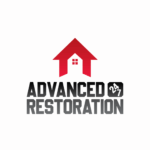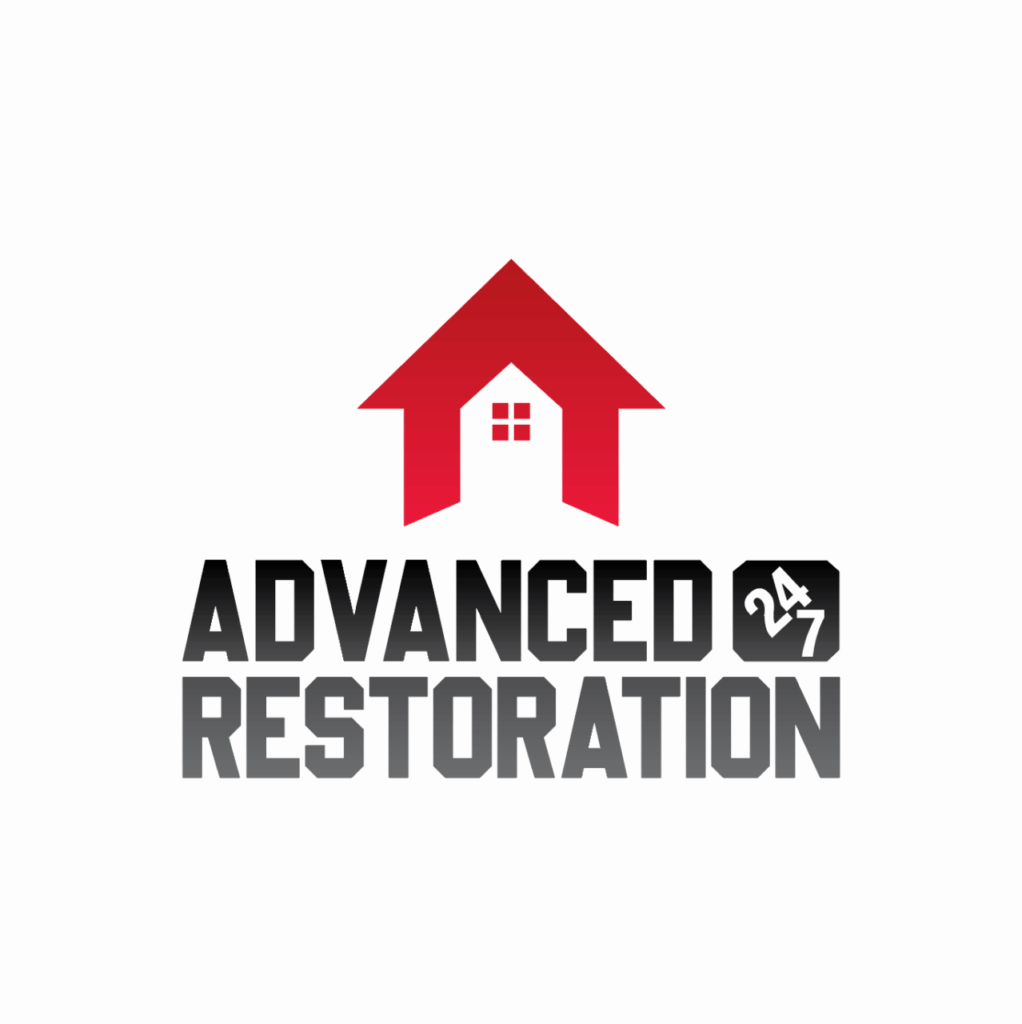When dealing with wet drywall, the burning question is whether it always needs replacing. In this comprehensive guide from Advanced 24/7 Restoration, we will explore the impact of water damage on drywall. We will look at salvageability, signs indicating that wet drywall is rescueable, and when replacement is the wiser choice. We’ll also provide expert tips on restoring your space to its former glory. So, let’s dive in!
The Impact of Water-Damaged Drywall
Water damage on drywall is a looming threat that can lead to mold growth and structural weakening. This issue can arise from various sources, including leaks, floods, or excessive humidity. When water permeates drywall, it weakens its structure and creates an ideal breeding ground for mold. Therefore, understanding the consequences of water damage on drywall and taking prompt action is crucial.
To combat water damage effectively, you must implement proper drying techniques. Start by identifying the source of water intrusion and sealing it to prevent further moisture infiltration. Then, eliminate any standing water or excess moisture using towels or a wet/dry vacuum cleaner.
Employ fans and dehumidifiers to promote airflow and reduce humidity levels, and open windows to enhance ventilation. Patience is key, as adequate drying takes time.
Next, assess the extent of water damage on your drywall. If the damage is confined to a small area, there may be hope for salvage. Consider carefully drying it out using heat sources like space heaters or hairdryers on a low heat setting. However, if the damage is extensive, with signs of sagging or crumbling drywall, it’s advisable to seek professional guidance to determine if replacement is necessary for your safety.
Remember, addressing water damage promptly prevents mold growth and preserves your home’s structural integrity. Adhering to the correct drying procedures can minimize long-term repercussions and effectively restore your drywall.
Factors Affecting the Structural Integrity of Water-Damaged Walls
Several factors come into play when determining whether wet drywall can be saved or if replacement is inevitable. Evaluating the severity of water damage and applying appropriate drying techniques is crucial. Here is a table summarizing the key factors influencing the salvageability of wet drywall:
| Factors to Consider | Description |
| Extent of Water Damage | The amount of water that has penetrated the drywall and the duration of exposure to moisture. |
| Type of Water | Clean water from a broken pipe has a higher salvage potential than contaminated water from sewage backups or floods. |
| Mold Growth | Mold on damp drywall can render it unsalvageable due to health risks and rapid spread. |
| Structural Integrity | If wet drywall is structurally compromised with warping or sagging, replacement may be necessary for safety. |
These factors will help determine if your wet drywall can be salvaged or if replacement is the only viable solution. In some instances, professional drying techniques, including dehumidification, ventilation, and targeted heat application, can salvage wet drywall. Consulting water damage restoration experts like Advanced 24/7 Restoration is essential for accurate assessment and guidance.
Quickly addressing water damage is crucial to prevent structural issues and health hazards caused by mold growth.
Signs That Wet Drywall Can Be Saved
If you’re dealing with wet drywall, you’re likely wondering if there are cost-effective ways to salvage it instead of completely replacing it. Here are some signs that indicate wet drywall might be rescuable:
- Minimal Water Damage: When water damage is limited to a small area, there’s a good chance that wet drywall can be saved. Minor leaks or localized floods may affect only a portion of the wall, leaving the rest undamaged. In such cases, professional restoration experts may be able to dry out the affected area without replacing the entire sheet of drywall.
- No Visible Mold Growth: Mold thrives in moist environments, so if your wet drywall shows no signs of mold, there’s hope for restoration. However, hidden mold could be behind the wall even without visible mold. Professional restoration experts will conduct thorough inspections and address any potential mold issues.
- Intact Structural Integrity: If the wet drywall’s structure remains intact and hasn’t suffered significant damage, professionals may restore it using proper drying techniques and repairs.
When Wet Drywall Should Be Replaced with New Drywall
There are instances when replacing wet drywall is the best course of action to prevent further damage. Extensive mold growth is a strong indicator that replacement is necessary. Mold can spread rapidly, posing health risks. Here are some reasons why replacing wet drywall is essential:
- Proper Drying Techniques: Effective water damage restoration requires appropriate drying techniques. This involves removing standing water, utilizing dehumidifiers and fans for air circulation, and ensuring thorough drying before making repairs. Following these steps mitigates the risk of mold growth and structural damage.
- Potential Risks of Not Replacing Wet Drywall: Choosing not to replace extensively mold-damaged wet drywall comes with several risks. Mold can release spores into the air, leading to respiratory problems such as allergies or asthma attacks. Prolonged mold exposure can result in severe health issues, including infections and toxic reactions in some individuals.
- Prevention of Further Damage: If left untreated, wet drywall can weaken the structure of your walls, possibly leading to sagging ceilings or even collapses. Timely replacement of wet drywall reduces the risk of costly repairs in the future.
Steps to Salvage Wet Drywall and Surrounding Walls
To salvage wet drywall effectively, follow these steps:
- Assessment: Evaluate the extent of the damage and determine if drying and repair are feasible or if replacement is necessary.
- Water Removal: Remove any standing water using a wet/dry vacuum or towels.
- Drying Techniques: Utilize fans and dehumidifiers to circulate air and eliminate humidity. Open windows and doors to enhance airflow. Use a heater to increase the room’s temperature, as warmer air facilitates faster moisture evaporation.
- Structural Inspection: While drying the drywall, inspect for structural damage such as sagging or crumbling. Minor issues like discoloration or small areas of bubbling paint can often be repaired using basic methods.
- Cleaning: For superficial water stains, clean affected areas with a mixture of bleach and water to eliminate potential mold spores. Apply a stain-blocking primer before repainting. Larger damaged sections that are soft or warped should be addressed by a professional specializing in drywall repairs.
Remember that effective wet drywall salvage requires thoroughness and attention to detail. Rushing through this process is not recommended; take your time to ensure proper drying and repair techniques are applied. Following these steps allows you to save on replacement costs while maintaining an aesthetically pleasing environment.
Wet Drywall Replacement Vs Repair: When is the Best Time to Replace Damaged Drywall?
Wet drywall doesn’t always require replacement. Its salvageability depends on factors such as the extent of water damage and how promptly it is addressed. Early detection and minimal damage often enable effective salvage efforts. However, replacement is the safer choice in cases of mold growth or severe structural damage. It is always advisable to consult with professionals for an accurate assessment and expert guidance.
At Advanced 24/7 Restoration, we are dedicated to helping you navigate the complexities of wet drywall issues. Whether you’re seeking restoration or replacement, our team is here to assist you in restoring your space and ensuring your peace of mind.
Advanced 24/7 Restoration’s mission is to provide unparalleled care and support to our valued clients. Delivering the best solutions for your property restoration needs. Our vision is to be the top-rated damage restoration company in Denver, known for our exceptional services, professionalism, and dedication to customer satisfaction. Water damage, fire damage, flood damage, and more.
- This author does not have any more posts


